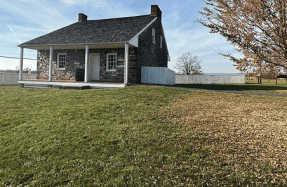FIGHT FOR REDEMPTION



THE BATTLE OF SUNSHINE CHURCH did not alter the outcome of the Atlanta Campaign, but it can’t be said that the fierce cavalry engagement outside Macon, Ga., on July 31, 1864, lacked for drama. The battle was a rarity in Union Maj. Gen. William T. Sherman’s monumental campaign that fourth summer of the war: a complete Confederate victory. But, more important, it offered the opposing commanders—Confederate Brig. Gen. Alfred Iverson and Union Maj. Gen. George Stoneman, former brother officers in the antebellum 1st U.S. Cavalry—an opportunity to redeem reputations that had been stained earlier in the war. Only one would succeed.
By late July 1864, after months of slogging back and forth with the Confederate Army of Tennessee from the mountains of northwest Georgia to the outskirts of Atlanta, Sherman focused on cutting the rail lines that supplied the city and its defenders, now commanded by Lt. Gen. John Bell Hood. On July 27, Sherman opened a two-pronged offensive: His Army of the Tennessee would work to seize the rail lines west of Atlanta while three bodies of cavalry moved south to destroy the Macon & Western Railroad. The Army of the Tennessee’s movement culminated in the July 28 Battle of Ezra Church, a tactical victory for Sherman but one that left the rail lines intact. The Union horsemen, however, continued to march on what their chief opponent, Confederate cavalry commander Maj. Gen. Joseph Wheeler, later called “the most stupendous cavalry operation of the war.”
Four thousand Union troopers under Brig. Gen. Edward McCook rode down the west bank of the Chattahoochee River as Stoneman, leading about 2,100 men, headed toward Covington, intending perhaps to feint toward Augusta. Meanwhile, Brig. Gen. Kenner Garrard’s 3,000 horsemen rode toward Flat Rock, north of Covington, to decoy Wheeler’s cavalry and block any pursuit of McCook and Stoneman. The latter two were to rendezvous at Lovejoy Station, on the Macon & Western south of Atlanta, and destroy track and telegraph lines. McCook was then to return to the
You’re reading a preview, subscribe to read more.
Start your free 30 days

